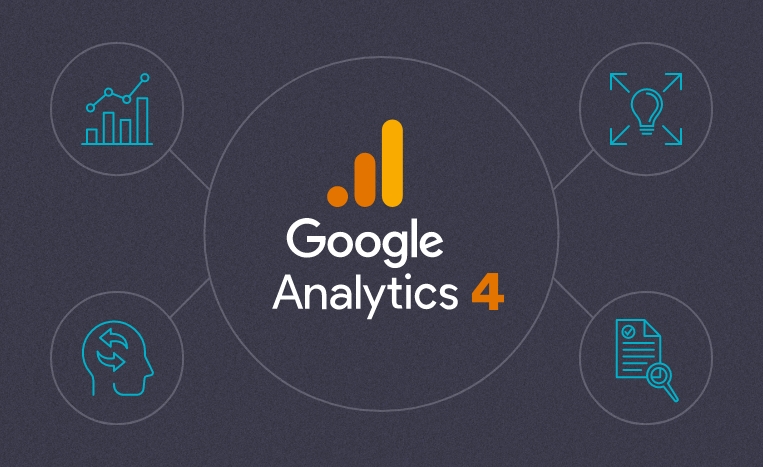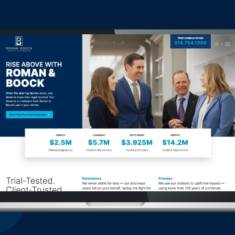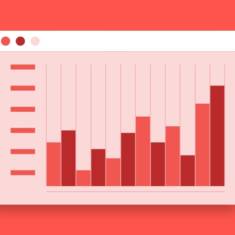4 Reasons to Integrate Google Analytics 4 into Your Digital Strategy Now
01.17.23
2023 is here which means the clock on the Great Data Migration is rapidly ticking down. Ready or not, Google Analytics 4 will go into effect on July 1. While the changes may seem overwhelming at the start, getting ahead in the first quarter will be an immense benefit to your business’s analytics strategy. In continuation of our Google Analytics 4 series, we compiled our top four reasons why you should migrate to Google Analytics 4 and implement it into your digital strategy now rather than later.
1) Preserving Historical Data
Google Analytics 4 will replace Universal Analytics as the primary interface for Google Analytics tracking on July 1, 2023. As a result, Universal Analytics will stop processing new data and historical data will expire completely a few months after the migration date.
While there is no way to directly migrate previous data sets into Google Analytics 4, it is encouraged to export previous data into a PDF, Google Sheet, Excel (xlsv) or CSV file. Exporting at least the past two years of historical data will give your business a reference point for past trends and bridge the time between the sunset of Universal Analytics and starting Google Analytics 4.
We recommend that you export data centered on these four questions:
1. Where did your audience come from?
This classifies as Acquisition Data in Universal Analytics.
2. Who is your audience?
This falls under User Segmentation Data in Universal Analytics.
3. How did they engage with your content?
Examples include, but are not limited to, page views, average session duration, pages per session and events.
4. Did they convert during their visit?
Examples include, but are not limited to, lead form completions, sales or transitions, phone calls and emails.
Before you start your data export, take a moment to gather your team’s input and consult with a Google Analytics agency on the necessary data you should pull into your export.
2) Learning the New Interface
Many businesses fail to consider the incredible digital strategy benefits of additional time learning Google Analytics 4. Google Analytics 4 contains numerous changes that differ from the current platform since it is now an event-based model, leading to updates in terminology and tracking capabilities.
Additionally, the update restructured navigation into two main groups: “Life cycle” and “User”. The Life cycle collection contains details around traffic, engagement and events, while the User collection contains details on demographics and technology such as devices and operating systems. By providing additional time to integrate Google Analytics 4, your team will be able to navigate and find necessary data faster than those who wait.
3) Understanding the Changes
Taking the initiative to migrate to Google Analytics 4 while Universal Analytics is still operating gives your team time to compare changes in your digital strategy. Many key terms you are currently familiar with in your reports have new names or have been removed completely to accommodate an event-based model.
Here are a few notable shifts between the platforms:
- Bounce rate is now recorded and referred to as engagement rate in GA4.
- Events account for all engagements with your website or app, including page views.
- Exploration reports provide information on user journeys that did not exist previously in Universal Analytics.
- Google Analytics 4 is not reliant on cookie-based tracking and offers a “future-proof” design that accommodates today’s greater interest in user privacy.
While the changes may seem overwhelming at first, migrating Google Analytics 4 now will give you time to grapple with changes, conduct research or consult a Google Analytics agency for more assistance.
4) Identifying Potential Issues in Reports
With the changes in terminology and additional features, your business’s reporting will look different with Google Analytics 4. Starting the migration process now gives you time to tweak your reports and compare them against past data sets. Additionally, it gives you time to ensure that everything you want to track is doing so correctly.
Google Analytics 4 generates reports using a measurement ID tag. You must place on your website yourself or use through Google Tag Manager. By migrating and installing your GA4 measurement ID now, you will be able to make sure it is tested properly and accurately collects your data. If you are not sure where to begin, our digital strategy and web development teams will be able to assist you. With 30 years in the digital sphere, we’re well versed in the proper migration protocols of Google Analytics 4.
Ready to Migrate to Google Analytics 4?
The Great Data Migration may seem daunting, but now is the time to act. By setting up and integrating Google Analytics 4, your business will be able to effectively determine key tracking points, spot potential problems and address them in your digital strategy well before July 1.
Our team is ready to help you succeed in the new world of Google Analytics. Whether you need help formulating a migration plan or are looking for a full-time analytics partner, contact Paradigm. Our experts will start your GA4 migration and build a solid analytics strategy for your organization.
For more information, visit our previous blogs for additional details on Google Analytics 4.


